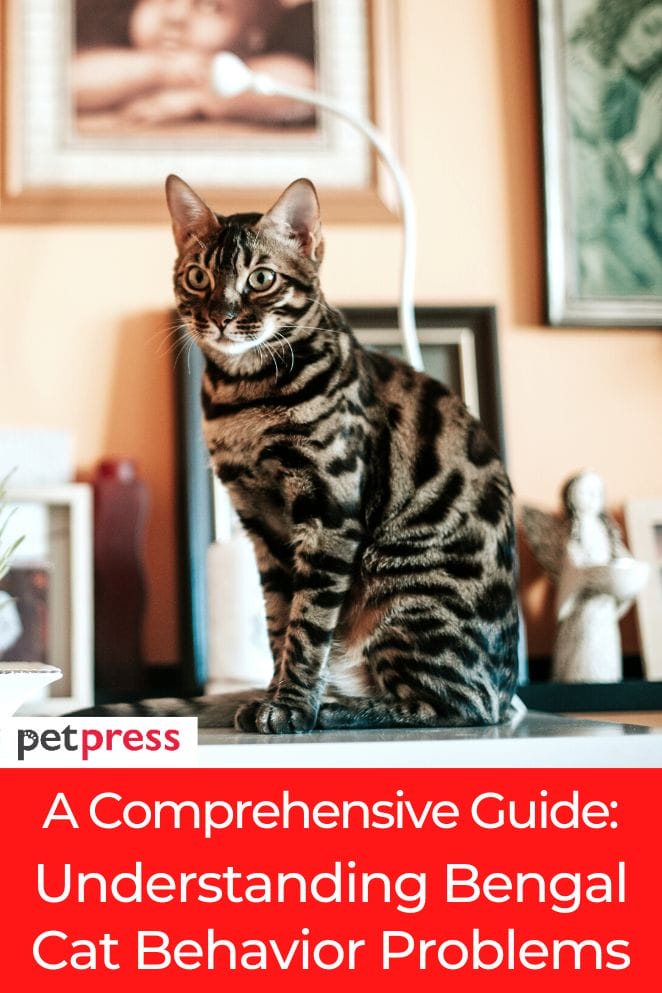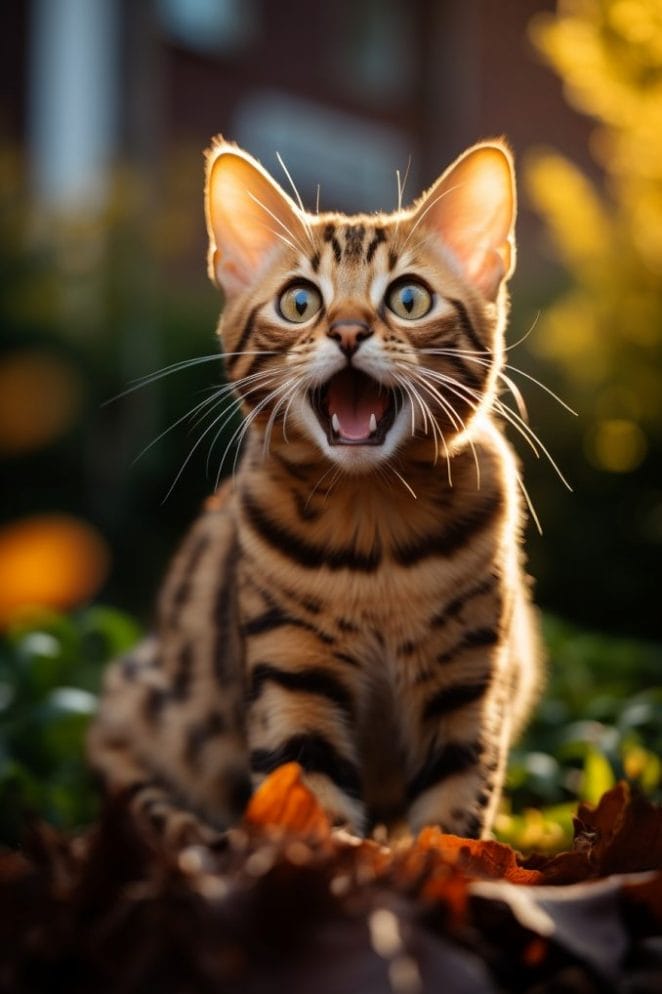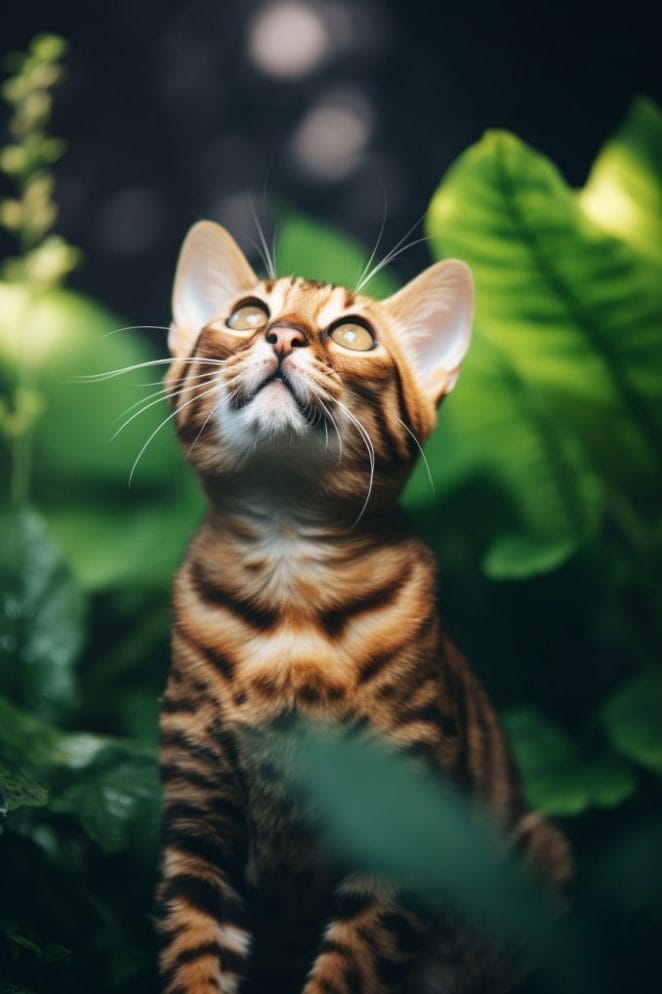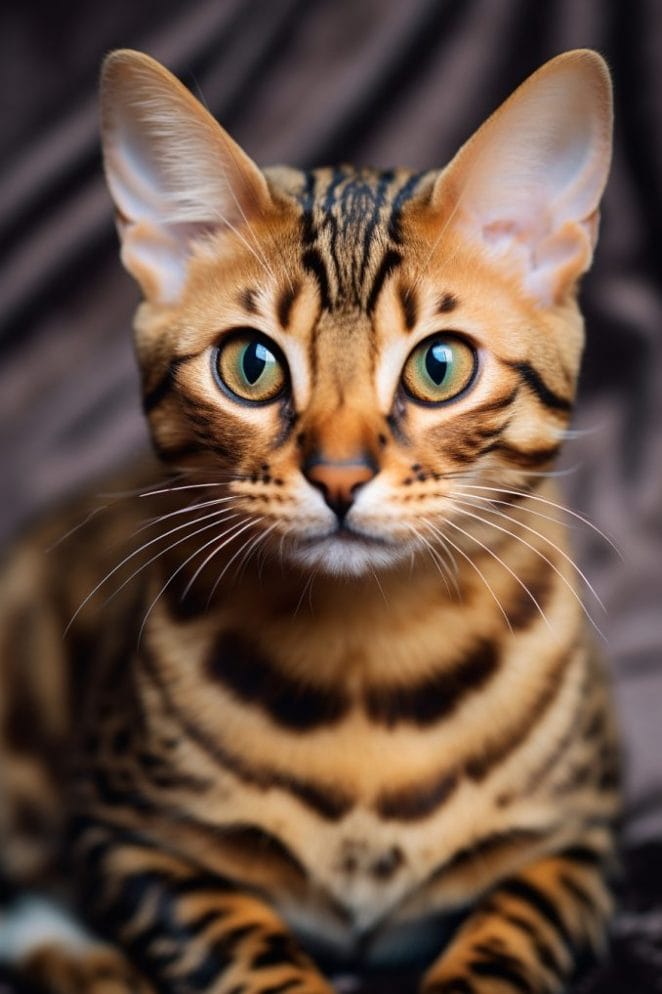
Bengal cats are undeniably charming with their distinctive spotted or marbled coats and lively personalities.
However, like any pet, they can exhibit behavior problems that may leave owners scratching their heads.
In this comprehensive guide, we’ll delve into the unique characteristics of Bengal cats, explore common behavior issues they may face, and provide practical solutions for a harmonious relationship between you and your feline friend.
Bengal Cat’s Unique Characteristics
Bengal cats, with their striking appearance and lively demeanor, possess distinctive characteristics that set them apart from other feline companions.
- Intelligence: Bengals are renowned for their high level of intelligence. They quickly grasp new concepts and can be trained to perform tricks.
- Playfulness: Playfulness is a defining trait of Bengal cats. They exhibit kitten-like energy well into adulthood.
- Affectionate nature: While Bengals may not be traditional lap cats, they form strong bonds with their owners.
- Love for water: Bengals have a unique affinity for water, which is uncommon among domestic cats.
- Vocalization: Bengals are known for their vocalization, often engaging in chirping and trilling sounds.
Common Bengal Cat Behavior Problems

Bengal cats, with their distinctive appearance and playful demeanor, make wonderful companions.
However, like any pet, they can exhibit certain behaviors that may pose challenges for their owners.
Excessive scratching
Bengals have a natural instinct to scratch, which is essential for maintaining healthy claws and marking their territory.
However, when scratching becomes destructive, it’s crucial to redirect this behavior.
One effective strategy is to provide appropriate scratching posts or pads made of materials that satisfy their scratching needs.
Excessive vocalization
While Bengal cats are naturally talkative, excessive meowing, yowling, or chirping might indicate underlying issues such as boredom, anxiety, or a need for attention.
Engage your Bengal in interactive play, providing mental and physical stimulation.
Puzzle toys and regular play sessions can help alleviate boredom.
Aggression
Aggression in Bengals can stem from feeling threatened or territorial.
Understanding the triggers and implementing effective strategies is crucial.
Ensure your Bengal has a safe space to retreat to when feeling overwhelmed. Gradually introduce new people or animals to avoid abrupt confrontations.
Inappropriate elimination
House soiling can be frustrating, but it’s essential to identify and address the root cause.
Medical issues, such as urinary tract infections, should be ruled out by consulting with a veterinarian.
If the issue is behavioral, evaluate the litter box environment.
Ensure it’s clean, easily accessible, and located in a quiet, low-traffic area.
Play biting
Bengal cats often carry their playful kitten behavior into adulthood, which may manifest as excessive biting or nipping, especially during playtime.
While this behavior is natural, it’s important to establish boundaries to prevent it from becoming problematic.
Provide appropriate toys for your Bengal to bite and chew on, redirecting their playful energy away from your hands or feet.
Attention-seeking behavior
Bengals thrive on attention, and if they feel neglected, they may resort to attention-seeking behaviors.
Balancing their need for interaction without reinforcing undesirable habits is key.
Engage in regular play sessions and provide toys that stimulate their mental and physical well-being.
Litter box avoidance
Bengal cats can be particular about their litter box cleanliness, and maintaining it to their standards is crucial.
If the litter box is not up to par, they may resort to litter box avoidance, causing stress for both the cat and the owner.
Ensure the litter box is clean and placed in a quiet, easily accessible location.

Factors Contributing to Bengal Cat Behavior Problems
Understanding the root causes of behavior problems is crucial for effective solutions. Factors such as:
- Boredom: Bengal cats are highly intelligent and energetic, and if they are not provided with sufficient mental stimulation and physical activity, they will find other ways to entertain themselves, often through destructive behavior.
- Lack of socialization: Early socialization with humans and other pets is crucial for Bengal cats to develop good social skills and reduce the risk of aggression or fear-based behaviors.
- Environmental stressors: Changes in routine, new additions to the household, or even loud noises can trigger anxiety in Bengal cats, leading to undesirable behaviors.
Behavior Modification Techniques
Creating a positive and harmonious environment for your Bengal cat involves understanding and implementing effective behavior modification techniques.
Positive reinforcement
Positive reinforcement is a powerful tool for shaping your Bengal cat’s behavior.
By rewarding good behavior with treats, praise, or affection, you create a positive association that encourages them to repeat those actions.
When discouraging undesirable behaviors, redirect their attention to more appropriate activities and reinforce positive alternatives.
Environmental enrichment
Bengals thrive in enriched environments that cater to their playful and curious nature.
Provide mental and physical stimulation through interactive toys, climbing structures, and puzzle feeders.
Rotate toys regularly to keep things interesting, encouraging your cat’s natural instincts to explore and engage.
Establish clear boundaries
Setting clear boundaries is essential for guiding your Bengal cat’s behavior.
Use positive reinforcement to encourage behaviors you want to see more of and gently discourage inappropriate actions.
For example, reward them when they use designated scratching posts and redirect them when they attempt to scratch furniture.
Consistent training
Consistency is the cornerstone of successful behavior modification.
Establish a routine for training sessions, keeping them short and positive.
Consistent reinforcement of desired behaviors, along with redirecting unwanted actions, helps your Bengal understand the rules of the household.
Provide ample exercise
Bengal cats are known for their energetic nature, and providing ample exercise is crucial for their well-being.
Engage in interactive playtime sessions using toys that mimic hunting behaviors.
Invest in climbing structures and scratching posts to satisfy their need for physical activity.
Consider incorporating puzzle feeders into their routine to stimulate their minds while encouraging problem-solving skills.
Maintain a clean litter box
A clean litter box is essential for your Bengal cat’s comfort and hygiene.
Regularly scoop the litter, choosing a type that aligns with your cat’s preferences.
Maintain cleanliness by cleaning the litter box thoroughly on a regular basis.
A well-maintained litter box encourages proper bathroom habits, reducing the likelihood of litter box avoidance.

Conclusion
Navigating the ownership of a Bengal cat presents distinct challenges.
However, with patience, comprehension, and the correct strategies, overcoming behavioral issues and nurturing a strong bond with your feline companion is achievable.
By delving into the underlying causes and applying proven behavior modification techniques, you can establish a home that is not only more harmonious but also enhances the happiness of both you and your Bengal cat.
FAQs
While Bengals are generally healthy, some may be predisposed to certain conditions. Regular veterinary check-ups are essential to address any potential health concerns that could impact behavior.
We’ll explore various methods, including providing scratching posts, using deterrents, and trimming your cat’s nails, to redirect their scratching behavior away from furniture.
Yes, with the right training techniques and understanding of their behavior, you can help your Bengal cat become more relaxed and less prone to aggression.


GIPHY App Key not set. Please check settings